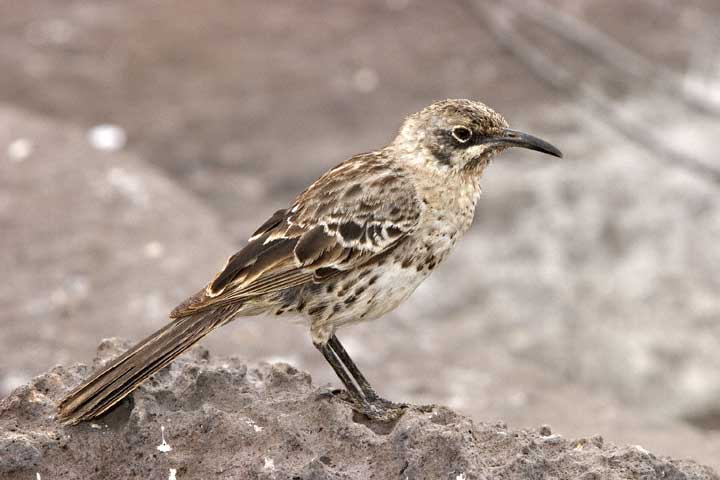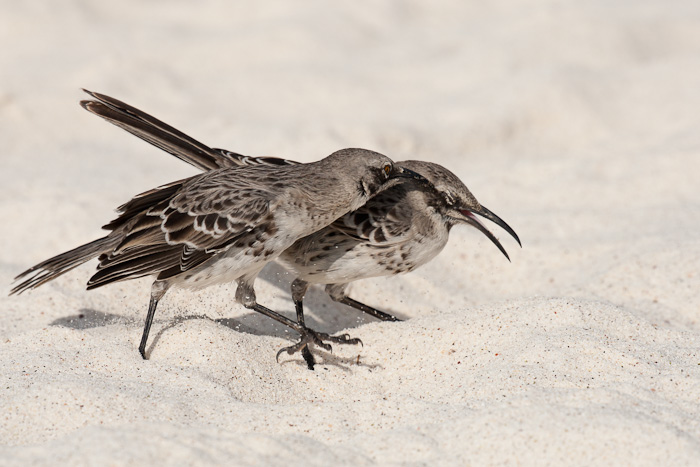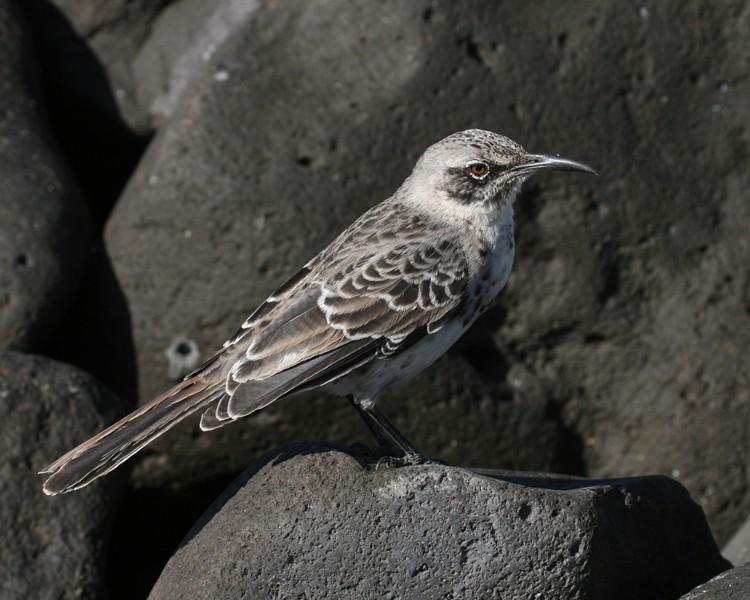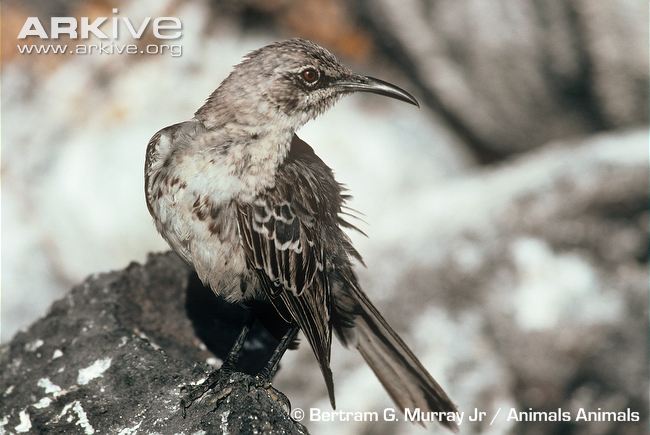
Nesomimus macdonaldi
TAXONOMY
Nesomimus macdonaldi Ridgway, 1890, Hood Island (Isla Espaсola),
Galбpagos Archipelago.
OTHER COMMON NAMES
French: Moqueur d’Espanola; German: Galapagos-
Spottdrossel; Spanish: Sinsonte de los Galбpagos.
PHYSICAL CHARACTERISTICS
11 in (28 cm). Weight not available. Generally variegated dull
gray-brown above, off-white below with variable amount of
darker spotting on chest. Eye yellow, bill and legs black.
DISTRIBUTION
Confined entirely to Hood Island (Espaсola) in the Galбpagos,
an island measuring approximately 8 mi long and 4 mi wide
(13 by 6.5 km).
HABITAT
Arid scrub; spends much time in seabird colonies.
BEHAVIOR
Totally fearless of humans. The mockingbirds of the Galбpagos
Islands live in groups, defending communal territories; in
the Hood mockingbird the groups are larger than in the other
species, at times up to 40 individuals. Groups rapidly adopt any
temporary human encampment, investigating unfamiliar objects
inquisitively and snapping up any offerings found therein.
FEEDING ECOLOGY AND DIET
Hood is the site of major marine mammal and seabird colonies
and the Hood mockingbird, in contrast to species that live on
other islands without such colonies, has developed some
unique and bizarre feeding habits. The birds will eat blood
from animals’ fresh wounds or eat congealed blood from the
sand. Engorged ticks and skin are picked from live iguanas.
The Hood mockingbird has a more powerful bill than other
members of the genus, and uses this to predate the eggs of
swallow-tailed gulls (Creagrus furcatus), but larger eggs of boobies
and albatrosses are only attacked if already damaged.
Other food items include invertebrates, vegetable matter, carrion
and feces. Groups whose communal territories do not include
a seabird or mammal colony have less varied diets.
REPRODUCTIVE BIOLOGY
Groups of up to 40 individuals occupy and mutually defend a
group territory, intruders being intimidated by consolidated
displays of aggression. In less optimal territories (e.g., those
without access to colonies), group size is smaller. Little published
information on nest and eggs; presumably similar to
other species of the genus; the Galapagos mockingbird (N.
parvulus) builds a cup-shaped nest in a shrub and lays three to
four eggs which are blue-green with brown markings.
CONSERVATION STATUS
Not threatened. Within its small range, abundant and not in
any obvious hazard. However, introduction of any alien
predatory species such as cats would very rapidly change this
situation.
SIGNIFICANCE TO HUMANS
Of very great significance with regard to evolutionary and
BEHAVIOR
al
studies. The Galбpagos fauna also has a major economic
impact on the finances of Ecuador by virtue of the
significant influx of foreign capital from tourism and from visiting
zoologists.
Photo Gallery of - Hood mockingbird




 Animalia Life
Animalia Life